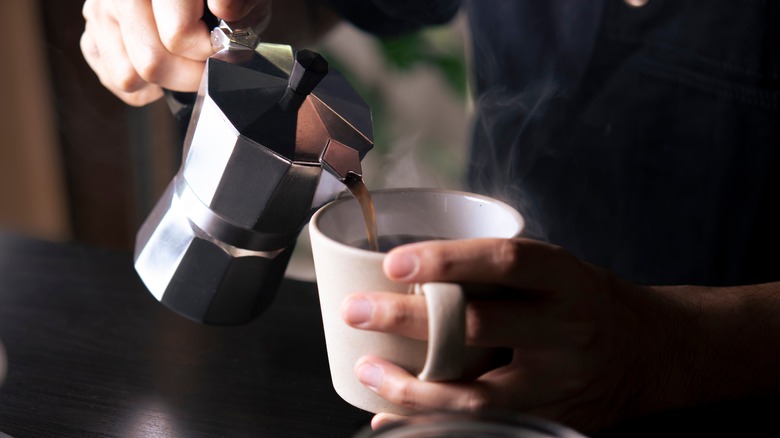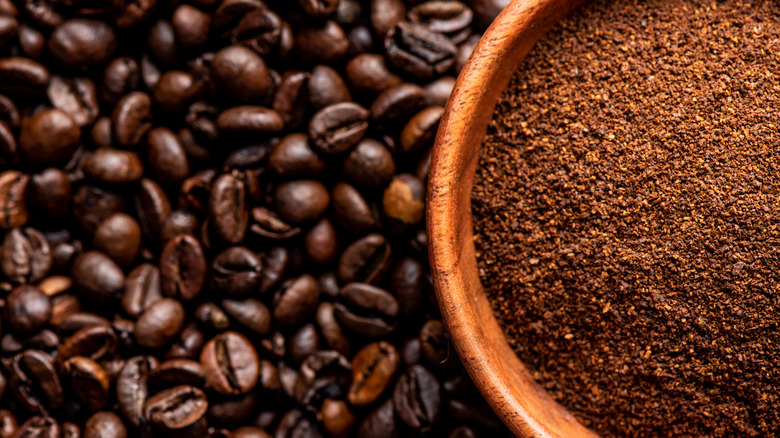The Expert Tip To Extract The Perfect Amount Of Coffee In A Moka Pot
Small, inexpensive, fast, and quintessentially Italian, the moka pot is the most humble emblem of coffee culture — and despite the technological and cultural coffee revolutions that have occurred since its invention in the 1930s, it remains equally as ubiquitous to coffee lovers as it was then. That said, the moka pot didn't make its way into mainstream, American coffee culture until more recently. And, if you're used to using a Nespresso machine, there's a bit of a learning curve, particularly as it pertains to extraction.
Knowing that, it's understandable if you have questions, and who better to ask than 2020 U.S. Barista Champion and 2021 World Barista Champion runner-up Andrea Allen, herself? As the co-founder and co-owner of Onyx Coffee Lab, Allen knows a thing or two about making a good cup of coffee, and when it comes to extracting the right amount in a moka pot, she says it's all the grind. "The finer the grind, the more extraction. The coarser the grind, the less extraction," said Allen. So, while you can't do anything once you've over or under-extracted your brew, you can adjust the grain size in your next one.
"Traditionally an under-extracted coffee will taste weak and potentially sour, whereas an over-extracted coffee traditionally tastes bitter," explained Allen. To counteract that, if the coffee from your moka pot tastes weak or sour, the solution would be to grind your beans slightly finer next time. If it's too bitter, grind it a little less.
The ideal grind size for a moka pot and how to achieve it
"People love to ask me, 'How do I know if my coffee is good?'" said Allen. "I always say, 'If it tastes good it's good!'" But, aside from making adjustments based on the taste of your coffee after it's already been prepared, Allen recognizes that there's an ideal grind size for moka pots — one that will produce a coffee true to its spirit. "The spirit of the moka pot is traditionally to create a concentrated coffee [...] similar to espresso," she explained. For that, Allen recommends aiming for a medium-fine grind size.
"A medium-fine grind will produce a heavy-bodied, concentrated beverage that's traditional and expected from a moka pot," she told Tasting Table. That's the extraction sweet spot — providing just enough surface area for the water to move through the coffee grounds at a speed that extracts all their flavor compounds, without becoming overly bitter. According to Allen, however, grinder consistency is equally as important to extraction as the grind size. That's why she recommends using a burr grinder.
Adjusted to your desired fineness, burr grinders use revolving burs to grind your coffee as opposed to blades. Burr grinders are the only type of coffee grinder that provide a consistent and uniform grind. So, even if you prefer a coarser grind for a lighter, less concentrated brew, you'll still want to use a burr grinder to ensure that the grind size is consistent.

